
🌱 Why is it important?
Preserving Amazonian ecosystems requires enhancing forest connectivity and restoring native vegetation at the forest edges to mitigate the negative impacts of habitat fragmentation. 🐸🌐
#Biodiversity #Amphibians #LandscapeEcology #EcologicalRestoration #AmazonRainforest
02.09.2025 17:46 — 👍 0 🔁 0 💬 0 📌 0

✔️ Forest edges act as ecological filters, limiting the colonization of pasture species into forest interiors via environmental gradients and functional competition.
02.09.2025 17:46 — 👍 0 🔁 0 💬 1 📌 0

✔️ In pastures, environmental filtering plays a major role in shaping amphibian assemblages, while limiting similarity governs the assemblage in forest interiors.
✔️ Functional diversity is more influenced by landscape connectivity, leaf litter depth, and humidity rather than edge effects alone
02.09.2025 17:46 — 👍 0 🔁 0 💬 1 📌 0

🌍🐸🌐 What are the effects of forest edges on amphibian diversity in Amazonian floodplains?
Our latest study sheds light on how environmental filters and limiting similarity shape the functional diversity of amphibian communities
🧪 Full article:
www.sciencedirect.com/science/arti...
02.09.2025 17:46 — 👍 5 🔁 1 💬 1 📌 0
On this #WorldSnakeDay 🐍 I would like to share one of the few studies on the functional diversity of snakes, in this case used to understand the effects of landscape transformation and roadkill
#SnakeWeek
#SnakeWeek2025
@snakeweek.bsky.social
@iucn-snake.bsky.social
16.07.2025 16:33 — 👍 5 🔁 1 💬 0 📌 0
🌱💡 What role do functional pollinator ecology studies play in adaptation to socio-environmental change? How can we integrate this scientific knowledge into public policies? #ScientificEducation #SocialChange #EnvironmentalPolicy #Pollination #Ecology
20.05.2025 12:17 — 👍 1 🔁 1 💬 0 📌 0
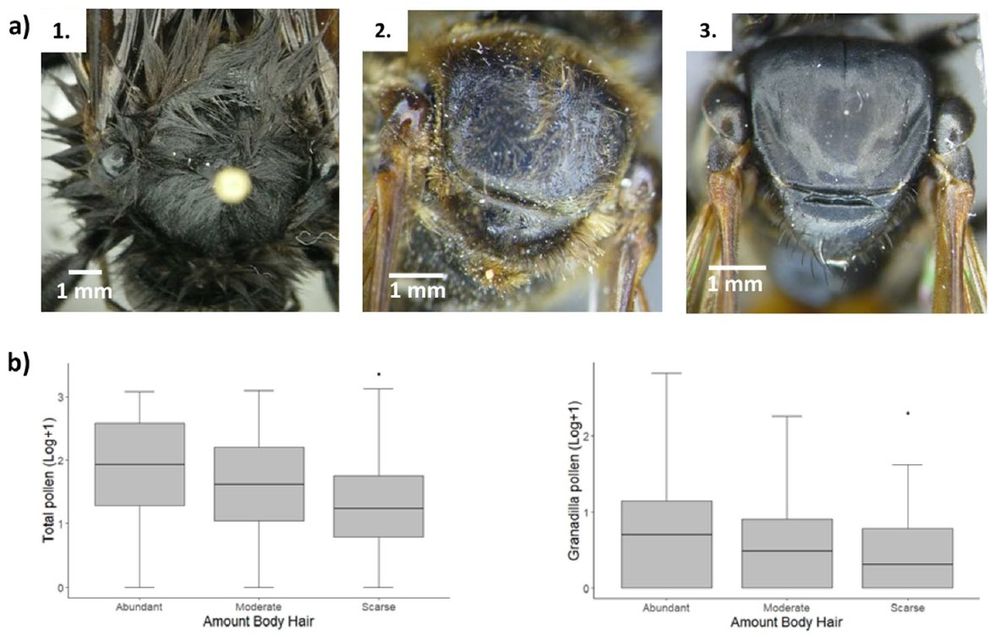
💡 Functional traits related to the amount of body hair in bees, which aid in pollen adhesion, showed no correlation with the total pollen amount, nor with granadilla pollen. #FunctionalTraits #Pollination #Biodiversity #Bees #Sustainability
20.05.2025 12:17 — 👍 0 🔁 0 💬 1 📌 0

🐝 The invasive species Apis mellifera, while the most abundant and large-bodied bee, DOES NOT carry pollen from native species nor from granadilla, making it a POOR pollinator for these crops. #Pollination #ApisMellifera #InvasiveSpecies #Ecology #Biodiversity
20.05.2025 12:17 — 👍 1 🔁 0 💬 1 📌 0

a cartoon of bees and flowers with the cn logo in the lower right corner
ALT: a cartoon of bees and flowers with the cn logo in the lower right corner
🔬 Body size in NATIVE bees is crucial for efficient pollen transport. Studies on insect pollinators can boost productivity and protect biodiversity. 🌻📚 #Sustainability #Pollinators #Ecology #AgriculturalEcology #Biodiversity
20.05.2025 12:17 — 👍 0 🔁 0 💬 1 📌 0

🌍🐝 Today, on #WorldBeeDay, we present our work on pollination in Passiflora crops. Understanding the functional traits of bees enhances agricultural production! 🌱🍯 link.springer.com/article/10.1...
#Pollination
@agroecologymap.bsky.social @global-ecology.bsky.social @savethebees.bsky.social
20.05.2025 12:17 — 👍 3 🔁 2 💬 1 📌 0
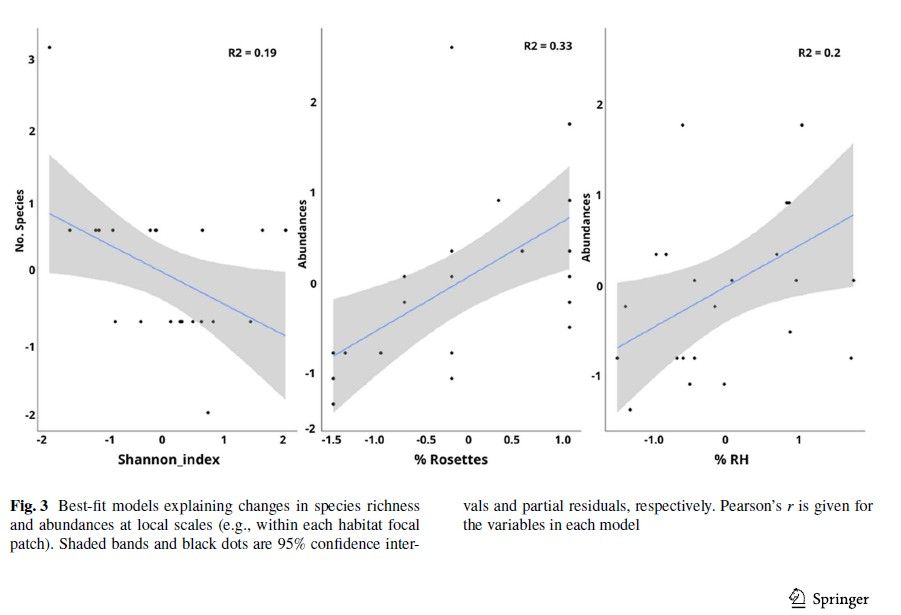
1. Anuran diversity was more influenced by landscape configuration (e.g., number of patches, water bodies) than composition.
2. Abundance was linked to structurally complex vegetation (e.g., rosettes, scrublands).
#LandscapeEcology #AmphibianConservation #TropicalEcology #DroneTechnology #Ecology
10.05.2025 15:01 — 👍 1 🔁 0 💬 0 📌 0

✔️ At 50m, larger contiguous habitats increased abundance, while fragmentation reduced it.
✔️ At 100m to 200m water bodies and scrubby vegetation like Chusquea spp. were key for species persistence, such as Dendropsophus molitor, which need water for larval development. @amphibianspecies.bsky.social
10.05.2025 15:01 — 👍 3 🔁 0 💬 1 📌 0

✔️ Landscape configuration is a crucial factor for species persistence.
✔️ Limited mobility: Species success depends on their movement between vegetation mosaics in these high-altitude ecosystems.
✔️ Conservation efforts should focus on maintaining connectivity and vegetation complexity.
#amphibians
10.05.2025 15:01 — 👍 0 🔁 0 💬 1 📌 0

✔️ Landscape configuration (number of water bodies, patches of dense scrub with Chusquea spp.) had a greater impact on anuran diversity than habitat composition.
✔️ Abundance: Positive correlation with complex vegetation types like rosettes and dense scrublands.
#Biodiversity #TropicalEcology
10.05.2025 15:01 — 👍 1 🔁 0 💬 1 📌 0

🌍🐸 How does environmental heterogeneity influence amphibian diversity in Andean highlands?
We evaluate the heterogeneity of a natural páramo ecosystem using drone imagery at a resolution of 4 cm/pixel. @landscape.bsky.social
🔗 rdcu.be/elt8u
#LandscapeEcology #AmphibianConservation #DroneTechnology
10.05.2025 15:01 — 👍 23 🔁 2 💬 1 📌 0
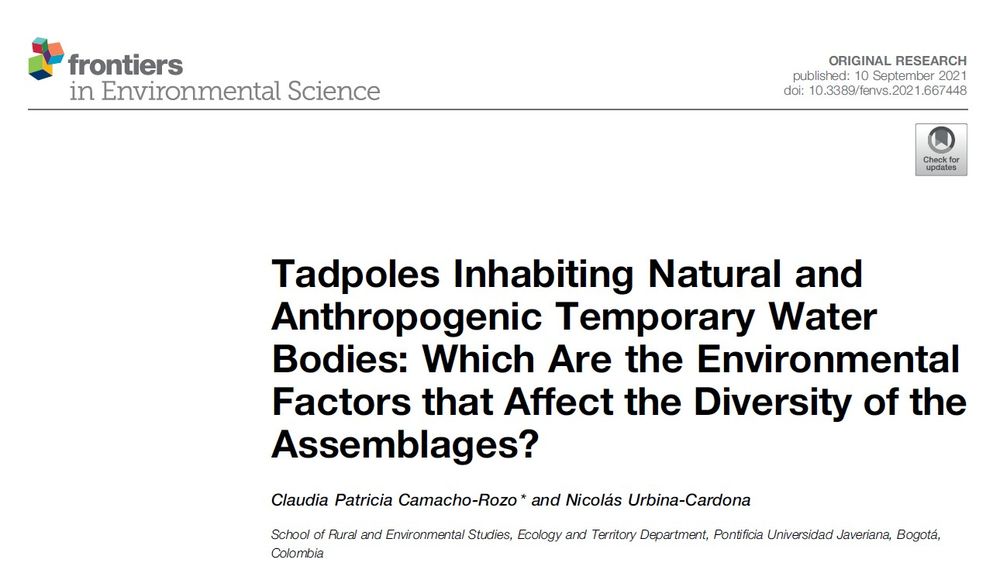
📚 Published in @RevMexBiodiv
🔗 Article: revista.ib.unam.mx/index.php/bi...
🐸 Check out also our tadpole study from the Colombian Orinoco:
👉 www.frontiersin.org/articles/10....
#NeotropicalScience #OpenAccessScience #FreshwaterBiodiversity
02.05.2025 12:48 — 👍 2 🔁 0 💬 0 📌 0

🔍 Conserving permanent, shaded water bodies surrounded by intact forest is key for protecting larval amphibians like E. bivocata.
🌿 Changes in vegetation cover alter pond microhabitats and reduce their suitability.
#ConservationBiology #TropicalForests #AmphibianDecline
02.05.2025 12:48 — 👍 1 🔁 0 💬 1 📌 0

Lithobates vaillanti inhabits ponds in secondary vegetation and in recently cleared forest areas with silty substrate and leaf litter in secondary/tallied forest (24°C)
#Amphibians #RainforestConservation #TropicalBiology
02.05.2025 12:48 — 👍 0 🔁 0 💬 1 📌 0

🌿 Species-specific pond preferences in rainforest:
✔️ Exerodonta bivocata: permanent ponds with flow, rocks, and decapods in shaded primary forest (22°C)
✔️ Incilius valliceps: temporary ponds without predators, pH 7.2, in secondary forest with branches and litter
#Tadpoles #TropicalHerpetology
02.05.2025 12:48 — 👍 0 🔁 0 💬 1 📌 0

🌡️ Which variables best explain tadpole abundance?
📌 Water temperature
📌 Water flow
📌 pH
These and other biotic & environmental factors drive larval distributions across species.
#AquaticEcology #Herpetology #FreshwaterScience #AmphibianBiology
02.05.2025 12:48 — 👍 0 🔁 0 💬 1 📌 0

🐸🌱 Did you know that tadpoles of different species live in completely segregated ponds?
Our study in the tropical forests of SE Mexico explores how vegetation, altitude & water shape tadpole abundance:
revista.ib.unam.mx/index.php/bi...
#Tadpoles #Amphibians #TropicalEcology #GlobalChangeBiology
02.05.2025 12:48 — 👍 2 🔁 0 💬 1 📌 0

⚠️ Conservation of natural temporary ponds with structured vegetation and optimal microhabitat conditions (e.g., mid-range pH, native vegetation nearby) is critical to preserving amphibian biodiversity in productive landscapes.
#ConservationScience #AmphibianDeclines #TropicalConservation
02.04.2025 13:28 — 👍 2 🔁 0 💬 0 📌 0

🔬 We also discuss and highlight the value of considering functional traits—such as reproductive mode and physiological plasticity—to better understand tadpole responses to habitat modification.
#TraitBasedEcology #FreshwaterEcology #TropicalScience
02.04.2025 13:28 — 👍 0 🔁 0 💬 1 📌 0

Which habitat variables explained community structure?
✔️ Vegetation height within the pond
✔️ Number of cattle in the area
✔️ Distance to the nearest forest edge
✔️ Distance to nearby lentic water bodies
✔️ Water pH
#FunctionalEcology #LandscapeEcology #EnvironmentalGradients
02.04.2025 13:28 — 👍 0 🔁 0 💬 1 📌 0
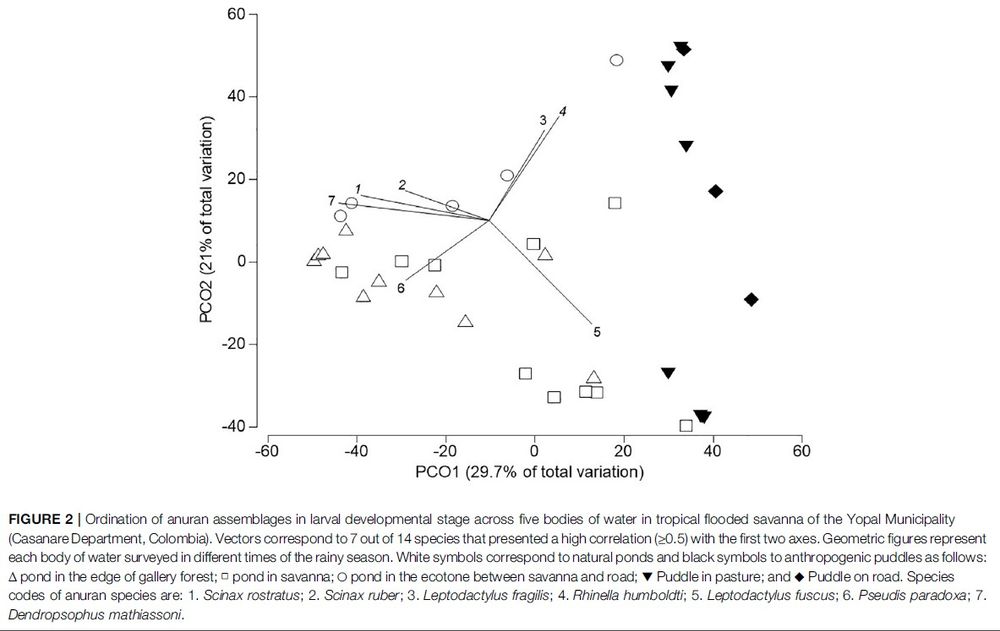
🧬 Each species responded differently to habitat gradients:
• Leptodactylus insularum was restricted to natural ponds in savannas.
• Rhinella humboldti and Leptodactylus fragilis showed traits allowing them to thrive in disturbed, human-made water bodies.
#AmphibianDiversity #HabitatSpecialists
02.04.2025 13:28 — 👍 0 🔁 0 💬 1 📌 0

🌿 Natural temporary ponds hosted 72% of all individuals and 86% of the regional species pool.
In contrast, anthropogenic ponds had very low diversity and abundance, dominated by generalists like Rhinella humboldti, Leptodactylus fragilis and L. fuscus.
#FreshwaterBiodiversity #LandUseChange
02.04.2025 13:28 — 👍 0 🔁 0 💬 1 📌 0

🐸 We’re excited to share one of the few tadpole community ecology study in the Orinoco region. Water bodies formed by tractor tire tracks and cattle footprints hold much lower amphibian diversity than natural ponds.
👇🧵
🔗 www.frontiersin.org/articles/10....
#Tadpoles #Amphibians #CommunityEcology
02.04.2025 13:28 — 👍 12 🔁 2 💬 1 📌 0
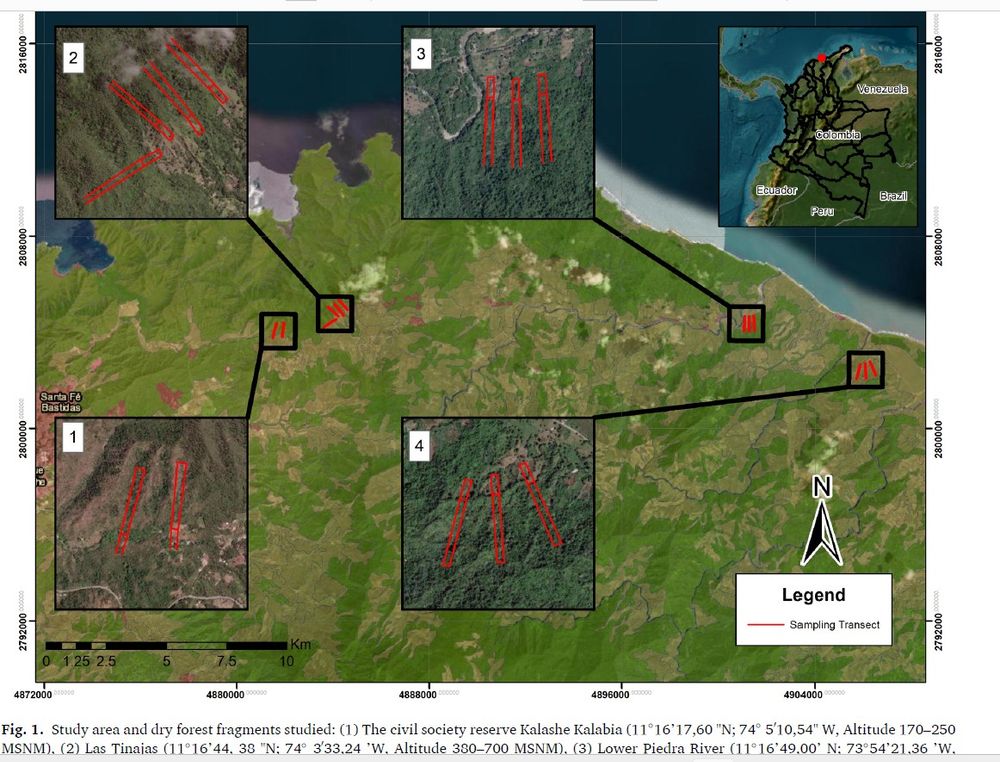
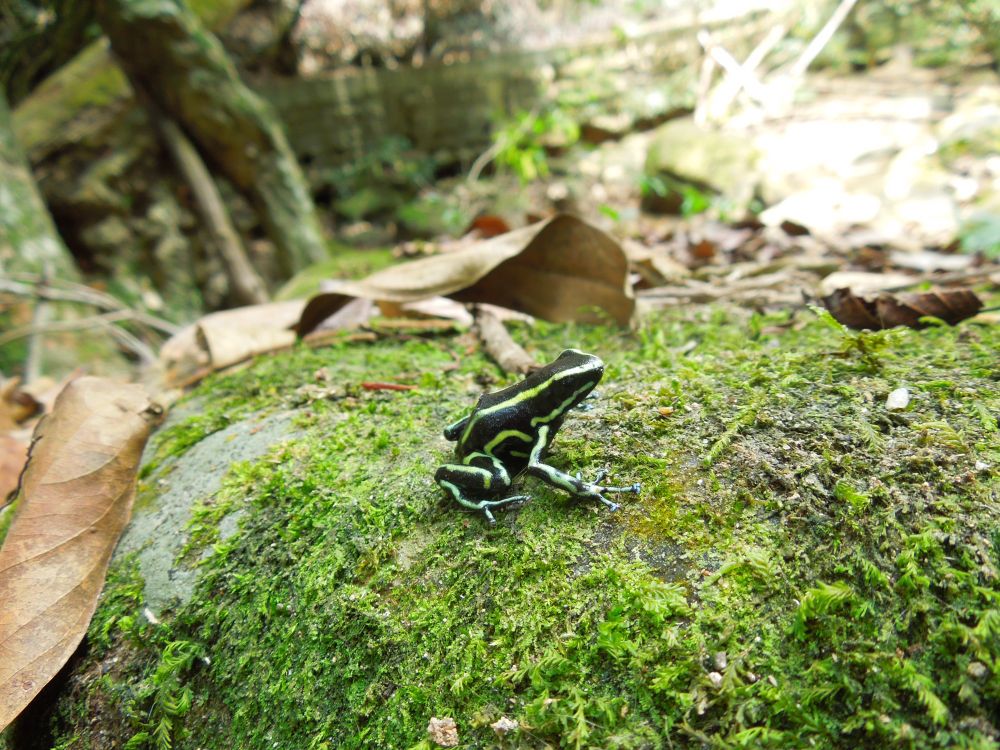
📖 Want to know more?
Read the full paper here:
🔗 www.sciencedirect.com/science/arti...
And explore our open dataset:
📚 data.mendeley.com/datasets/ht6...
🌍 Conserving dry forests also means protecting their frogs!
#OpenScience #FunctionalEcology #Herpetology
25.03.2025 13:48 — 👍 2 🔁 0 💬 0 📌 0

🌿 What can we do?
✅ Restore edges with native vegetation
✅ Promote agroecological corridors (e.g. silvopastoral systems)
✅ Prioritize conservation of high-elevation fragments, home to unique specialists
#EcologicalRestoration #Connectivity #Agroecology
25.03.2025 13:48 — 👍 3 🔁 0 💬 1 📌 0


🔬 And what shapes functional diversity?
📌 Elevation!
🌄 Higher elevation fragments showed more functional richness, evenness, and specialization.
Amphibians are finely tuned to their microclimates.
#FunctionalTraits #EcoPhysiology #AltitudinalGradients
25.03.2025 13:48 — 👍 0 🔁 0 💬 1 📌 0
Salamander Lady. #Amphibian conservation + microbial ecology + disease + #genomics + #bioinformatics + community assembly | Asst Prof at RIT & JGI affiliate | 🐸🐕🧫🧬 🍕| BlackLivesMatter | she/her
https://megalabrit.weebly.com
Research leader and herbarium curator at the University of Zurich.
Exploring how plants build communities, cross borders & create diversity https://ingridolivares.com
Ornithology, evolution, ecology. Assistant Professor and Curator of Birds at Louisiana State University. I also like rugby, house music, hip-hop, food, baking, and art. he/him/él
Lecturer at Bangor University 🏴 🇬🇧
Brazilian 🇧🇷
Parasites scientist 🔬
I study the drivers of vector-borne diseases focusing on land cover, climate, and host diversities.
TT-IV Fellow at @leveg.bsky.social 🇧🇷 | Forb enthusiast 🪻| Tropical savannas & open ecossystems 🌾| Advocating for FAIR open science 🔓 | #SavannaEcology #DataScience | https://gabrieladezotti.github.io/gdezotti.github.io/
Assistant Professor of Restoration Ecology at New Mexico State University. Also interested in invasions, functional traits, and science communication.
Lab website: functionalrestoration.nmsu.edu
Science journalist & biology nerd. ❤️🧪 Lover of brains & microbes & weird animals. Opinions mine obviously.
PhD student at Centre d'Ecologie Fonctionnelle et Évolutive (CEFE), Montpellier, France.
Population ecology · Small carnivores · Conservation · Statistical Ecology
🦦🦊⛰️📷🪐
Park ranger turned environmental journalist.
markdegraff.com
I 💜 evolutionary genetics/genomics, repeated adaptation, 🌸 pigmentation, 🏔️ alpine environment, polyploidy
I'm MSCA fellow at Charles Uni 🇨🇿 and Uni Bern🇨🇭
X @MajdaHolcova
An arm of the International Union for Conservation of Nature (IUCN)/Species Survival Commission (SSC). A global network of scientists, conservationists, governments, and other groups dedicated to the conservation of snakes and their habitats. IUCNsnake.org
Assoc prof of integrative biology at U of Costa Rica 🇨🇷 | Chemical ecology, behavior, parental care, omics in the tropics 🐸☠️🧬🌳
From suspense to soul-stirring stories I writes them all Love the arts, writing, painting, strumming my guitar & generally being creative. From Gibraltar originally Website: https://t.co/8gSEmJ7TCu Team Site @iquitcigs.bsky.social
Biology Master's student at #LMU Munich | Herpetologist 🐸🐍| Botanist🌿
Mostly #rstats in #Ecology, #Nature and #LifeScience
As an author, I have published various academic and non-academic books. https://www.goodreads.com/author/show/3380206.Anton_Sammut
PhD Student at University of Houston | Stuckert Lab | E3BColumbia '23 | herps (especially caecilians) & color evo 🐸🦎🧬 | #FirstGen | he/him 🏳️🌈
Eora man on Darkinjung country; Father of 2 boys - #ClimateActionNow; University Teacher and Discipline Lead - Social Sciences. Attempting to start an #antifa garden under the palms and gums of Empire Bay, NSW (Yes, the irony - pic above). Opinions mine.
NatGeo Explorer, Oceanographer, Climate Scientist; Env. Remote Sensing; Energy & Sustainability; husband, father #FirstGen, Views my own; Google scholar: https://scholar.google.com/citations?hl=en&user=qMBuSe4AAAAJ
Molecular ecologist studying #biodiversity and #trophicInteractions using #eDNA in the air, water and feces🧬
(she/her)
https://oriannetournayre.wixsite.com/website





























